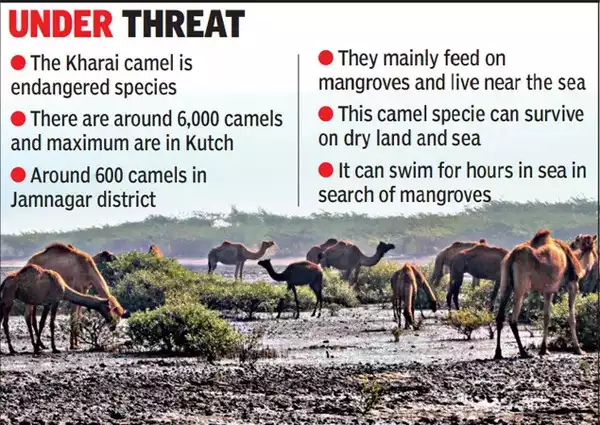Free Courses Sale ends Soon, Get It Now


Free Courses Sale ends Soon, Get It Now



Disclaimer: Copyright infringement not intended.
Context
Highlights of the report

About Kharai Camel
Breeds in Kutch
Unique abilities
Facing threats
About Camels
Ways of adaption
Uses
Size
Diet
Habitat
Habits
Classification
Conservation status
|
PRACTICE QUESTION Q) Which of the following statements with reference to camels is/are correct? a. All camels have one hump which consists of stored fat, which they can metabolize when food and water is scarce. b. Camels like to stay together in groups called herds. c. Camels are herbivores.
Answer: Option 2 |
© 2024 iasgyan. All right reserved